Biogeochemical Cycles
1/25
There's no tags or description
Looks like no tags are added yet.
Name | Mastery | Learn | Test | Matching | Spaced |
|---|
No study sessions yet.
26 Terms
What are the multiple cycles showing the flow of essential elements from the environment, to living things, and then back to the environment.?
biogeochemical cycles
What are major storage locations for essential elements?
reservoirs
What is the process through which elements are incorporated by terrestrial plants and animals?
assimilation
What is the process by which the element returns to the environment?
release
What are the reservoirs for the hydrologic (water) cycle?
1. oceans
2. air (water vapor)
3. ground water
4. glaciers
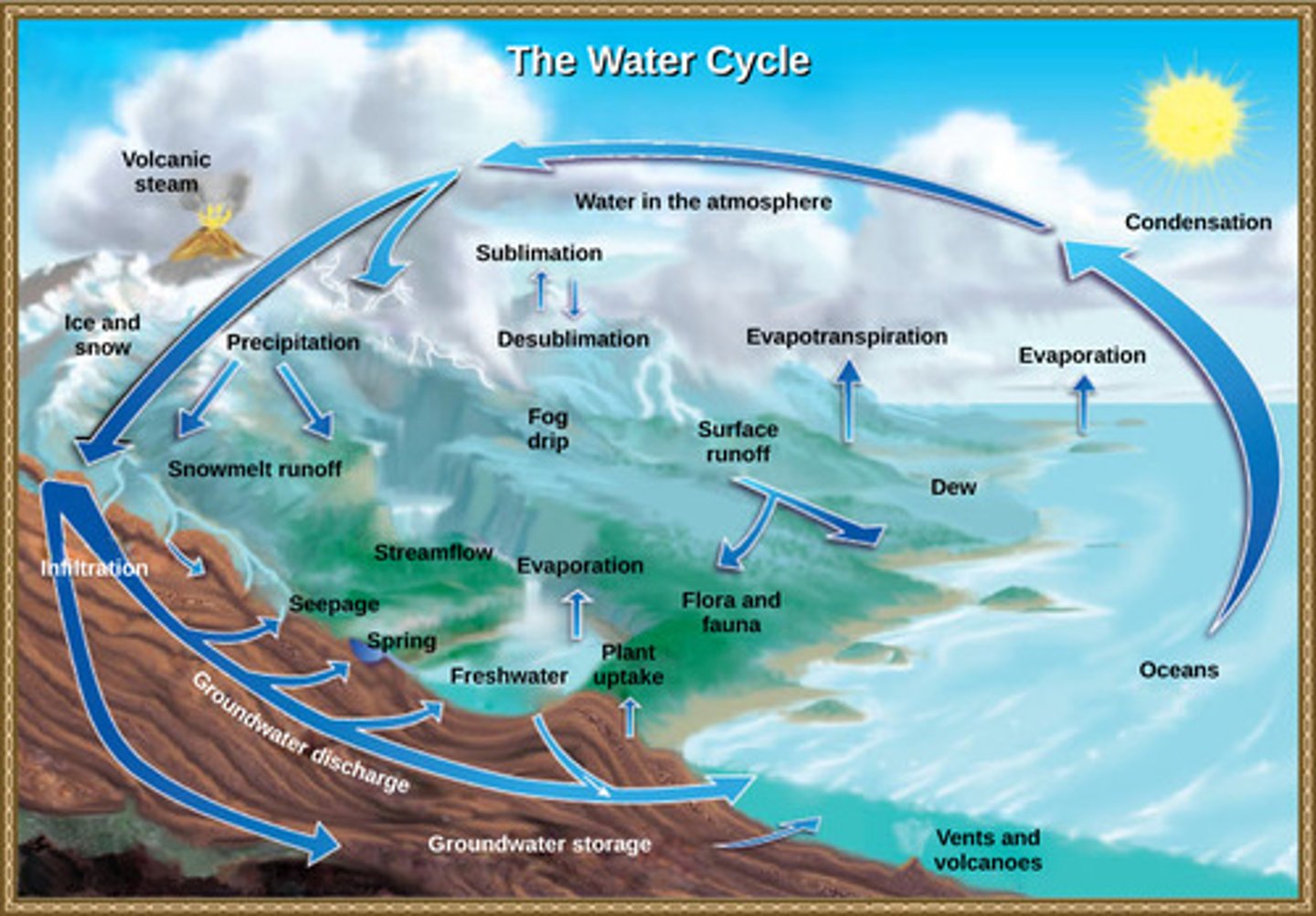
What processes move water from the ocean to land in the water cycle?
1. evaporation
2. wind
3. precipiatation
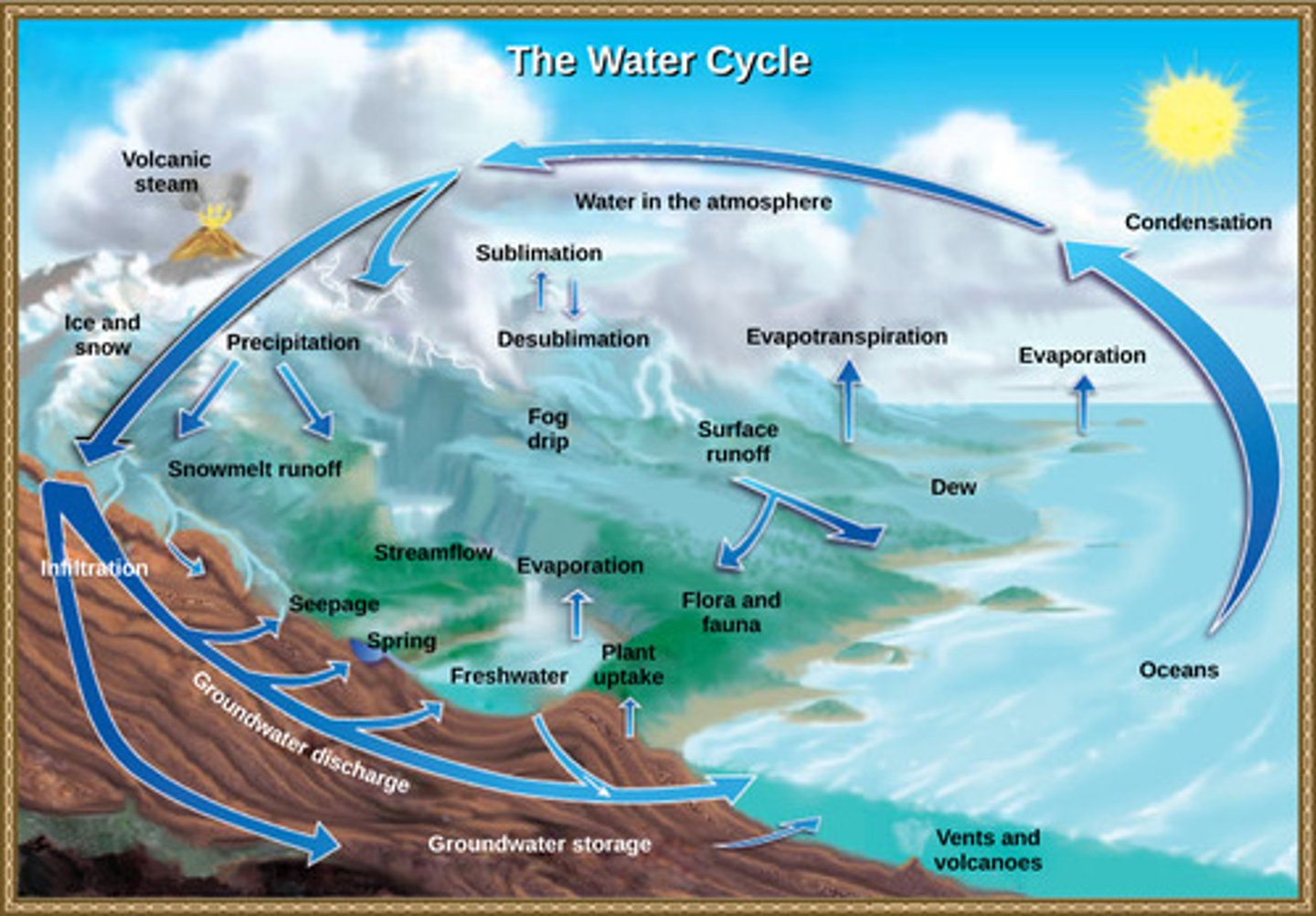
How is assimilation accomplished in the water cycle?
1. plants absorb
water from the soil
2. animals eat other
water-filled organisms

How is release accomplished in the water cycle?
1. plants transpiring
2. animals and plants
decomposing

What element is required for building organic materials and is the basis for photosynthesis and respiration?
carbon
What are the reservoirs for the carbon cycle?
1. atmospheric CO2
2. fossil fuels (coal/oil)
3. peat
2. durable organic
material (cellulose)
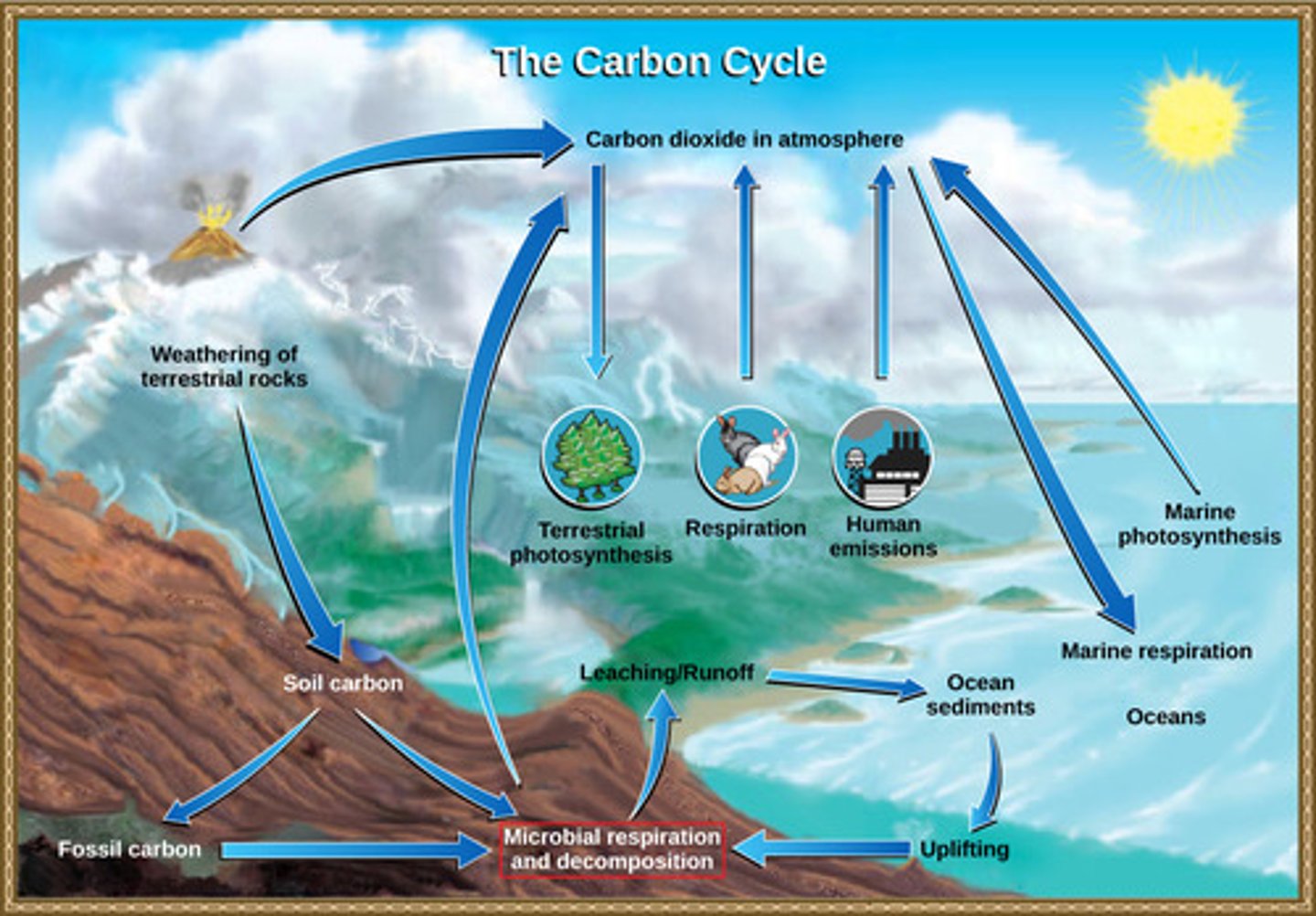
How is assimilation accomplished in the carbon cycle?
1. plants using CO2
in photosynthesis
2. animals consuming plants

Why are plants using CO2 and animals consuming plants in the carbon cycle considered carbon fixing?
carbon is reduced from
its inorganic form of CO2
to organic compounds
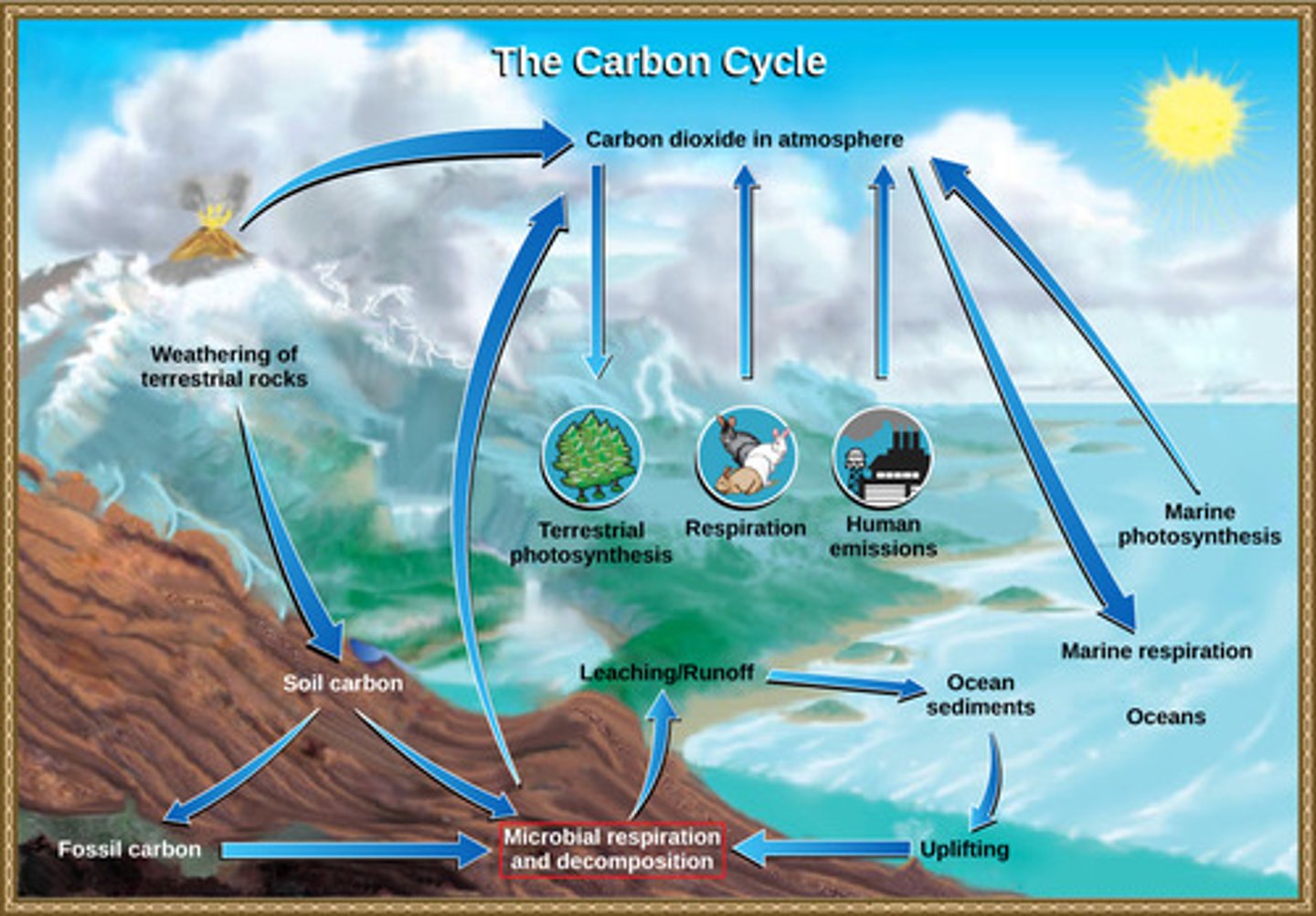
How is release accomplished in the carbon cycle?
1. respiration
2. decomposition
3. burning organic material
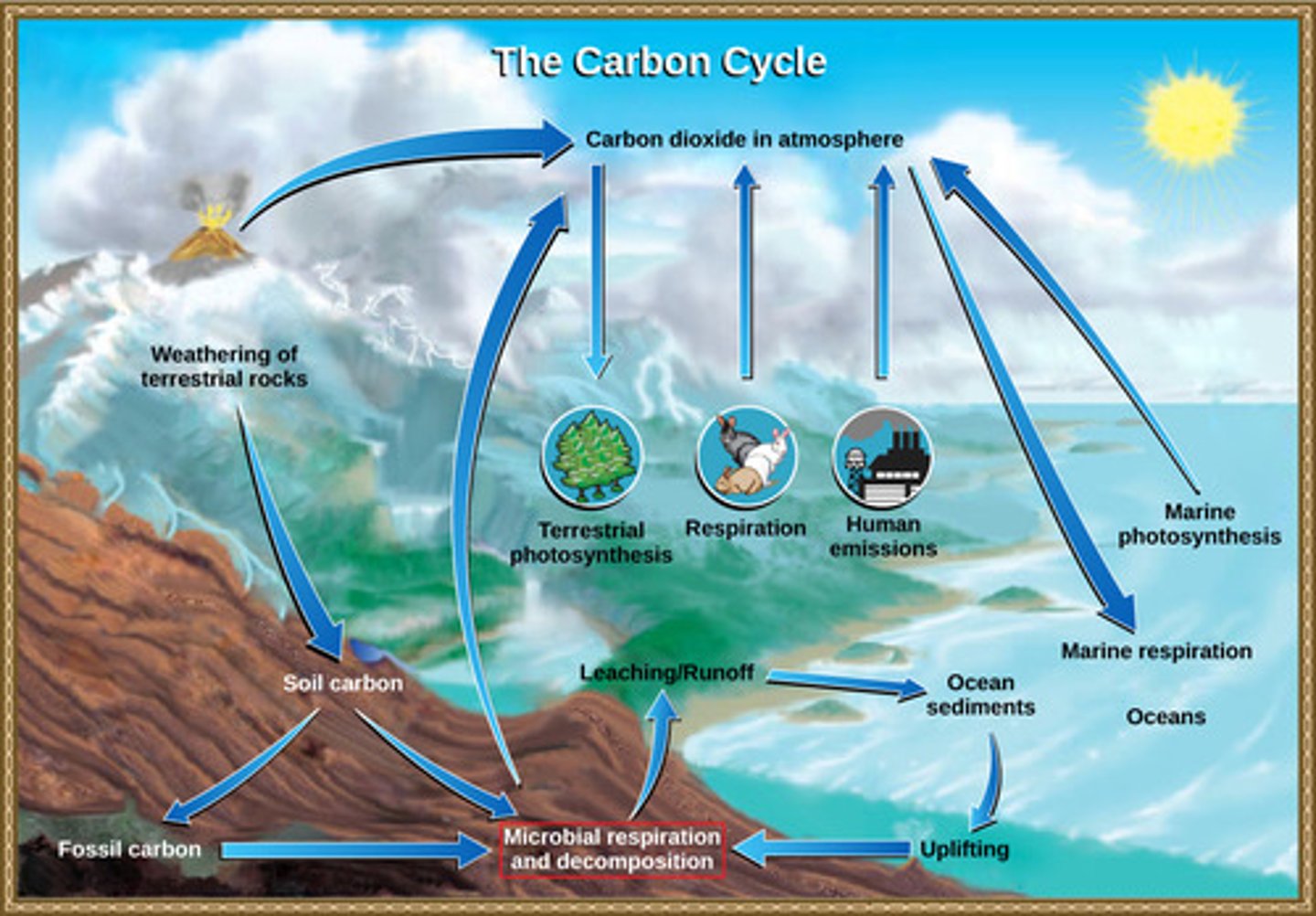
What element is required for the manufacturing of amino acids and nucleic acids?
nitrogen
What are the reservoirs for the nitrogen cycle?
1. atmospheric nitrogen (N2)
2. soil (NH4+, NH3, NO2, NO3)
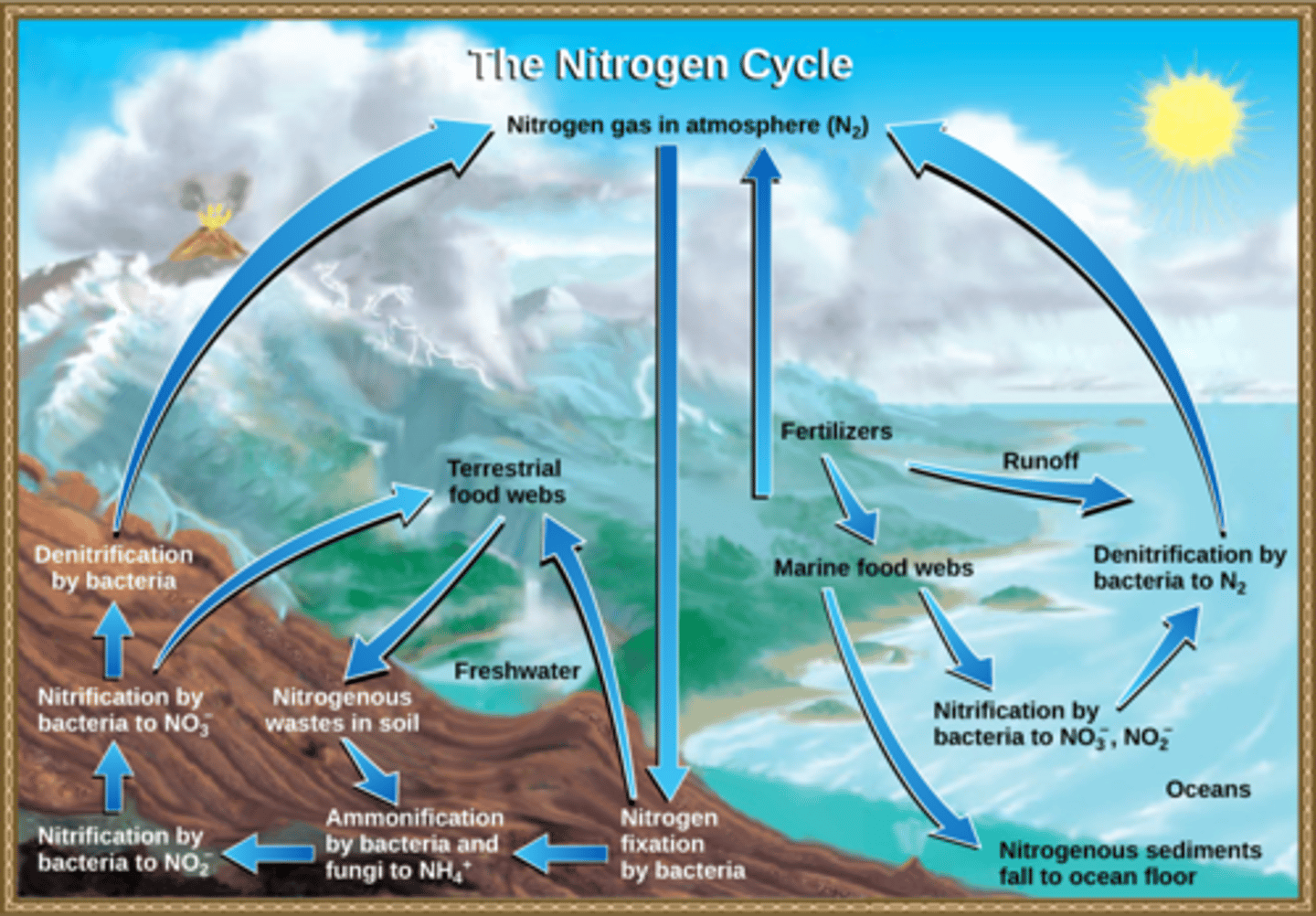
How is assimilation accomplished in the nitrogen cycle?
1. plants absorb
nitrogen (NO3- or NH4+)
2. animals obtain nitrogen
by eating plants/animals
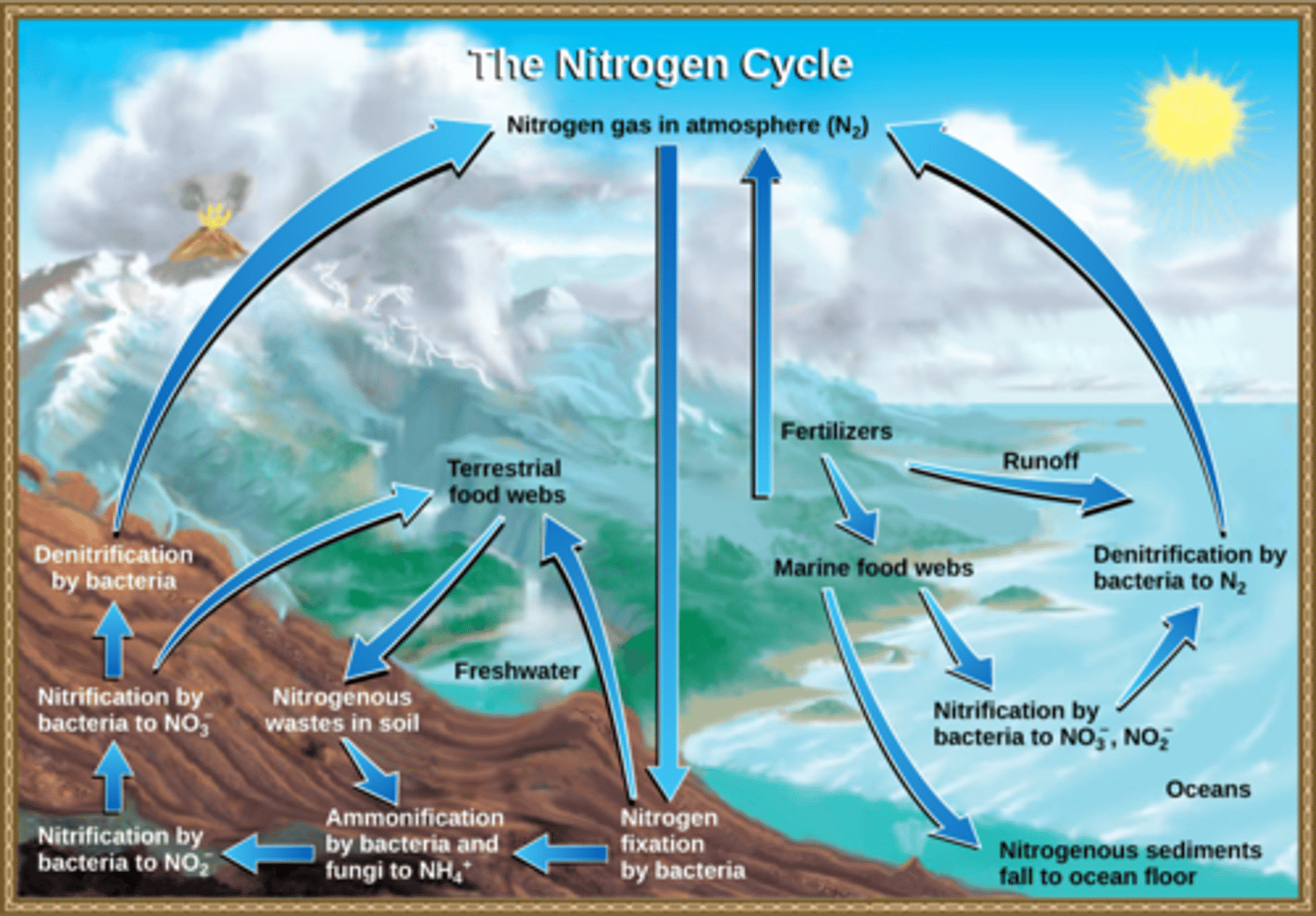
What process occurs when atmospheric nitrogen (N2) is converted into organic nitrogen (NH4+) through nitrogen-fixing bacteria in the soil?
nitrogen fixation
(Note: Nitrogen can also
be fixed by lightning and
be converted into nitrogen
oxides (NOx))

What process occurs when bacteria convert ammonium (NH4+) to nitrite (NO2-) and then convert nitrite to nitrate (NO3-)?
nitrification
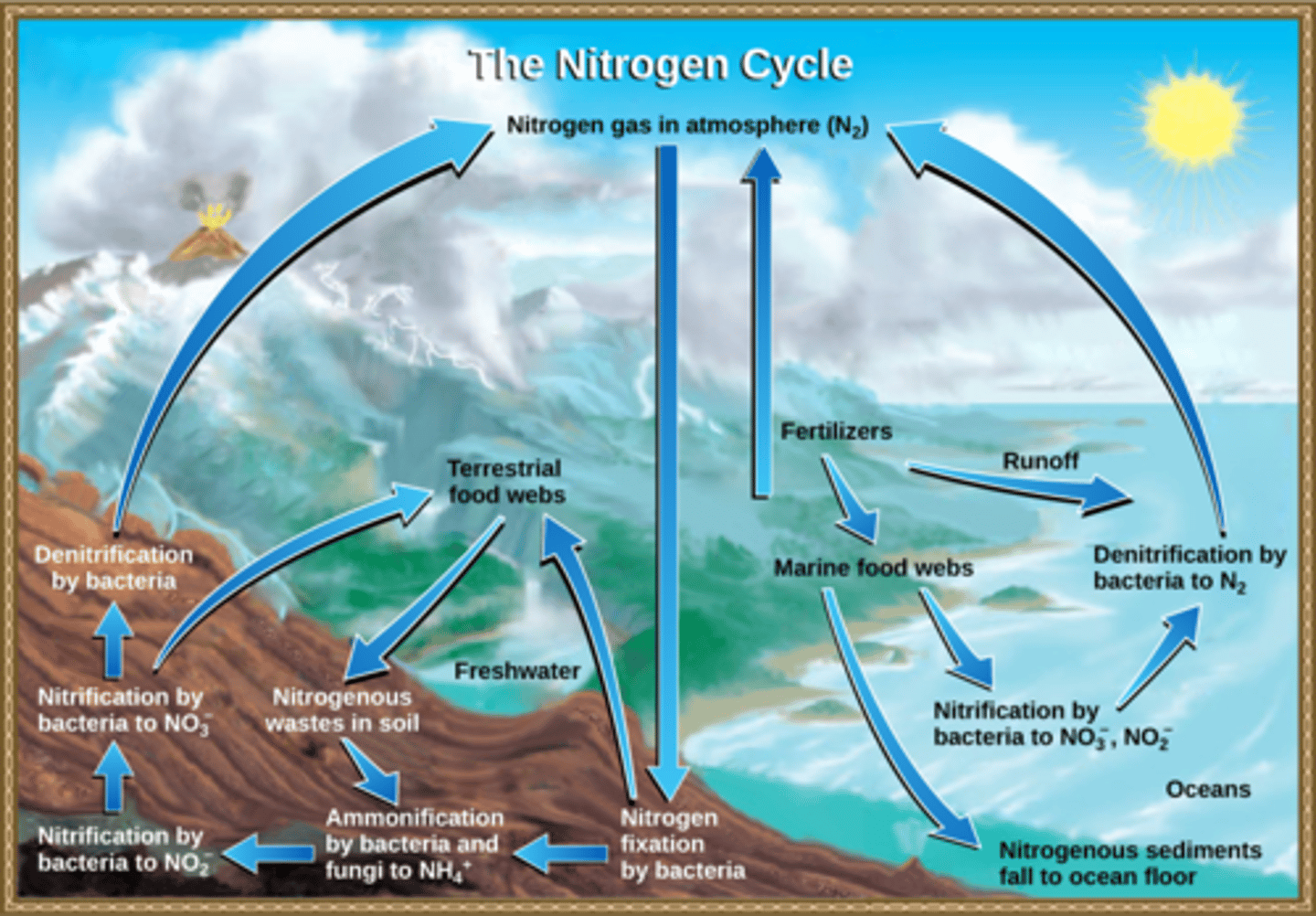
What 3 types of organisms can release nitrogen?
1. denitrifying bacteria
2. detritivorous bacteria
3. animals
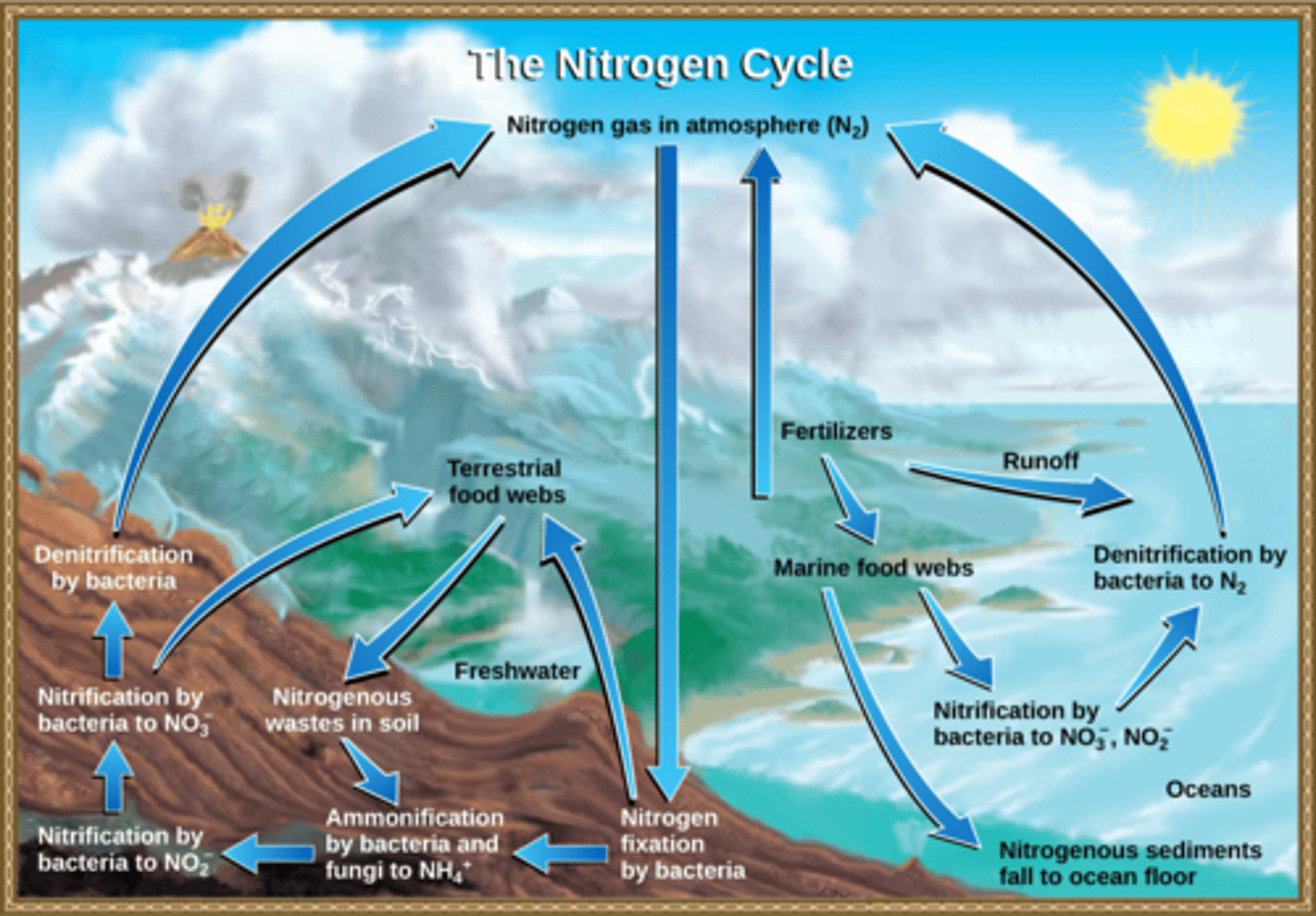
How do denitrifying bacteria release nitrogen?
convert nitrate into
atmospheric nitrogen

How do detritivorous bacteria release nitrogen?
converting organic
compounds back to
ammonium (ammonification)

How do animals release nitrogen?
1. excreting ammonium,
urea, or uric acid
2. decay since nitrogen
in the form of ammonia (NH3)
is released from dead tissues
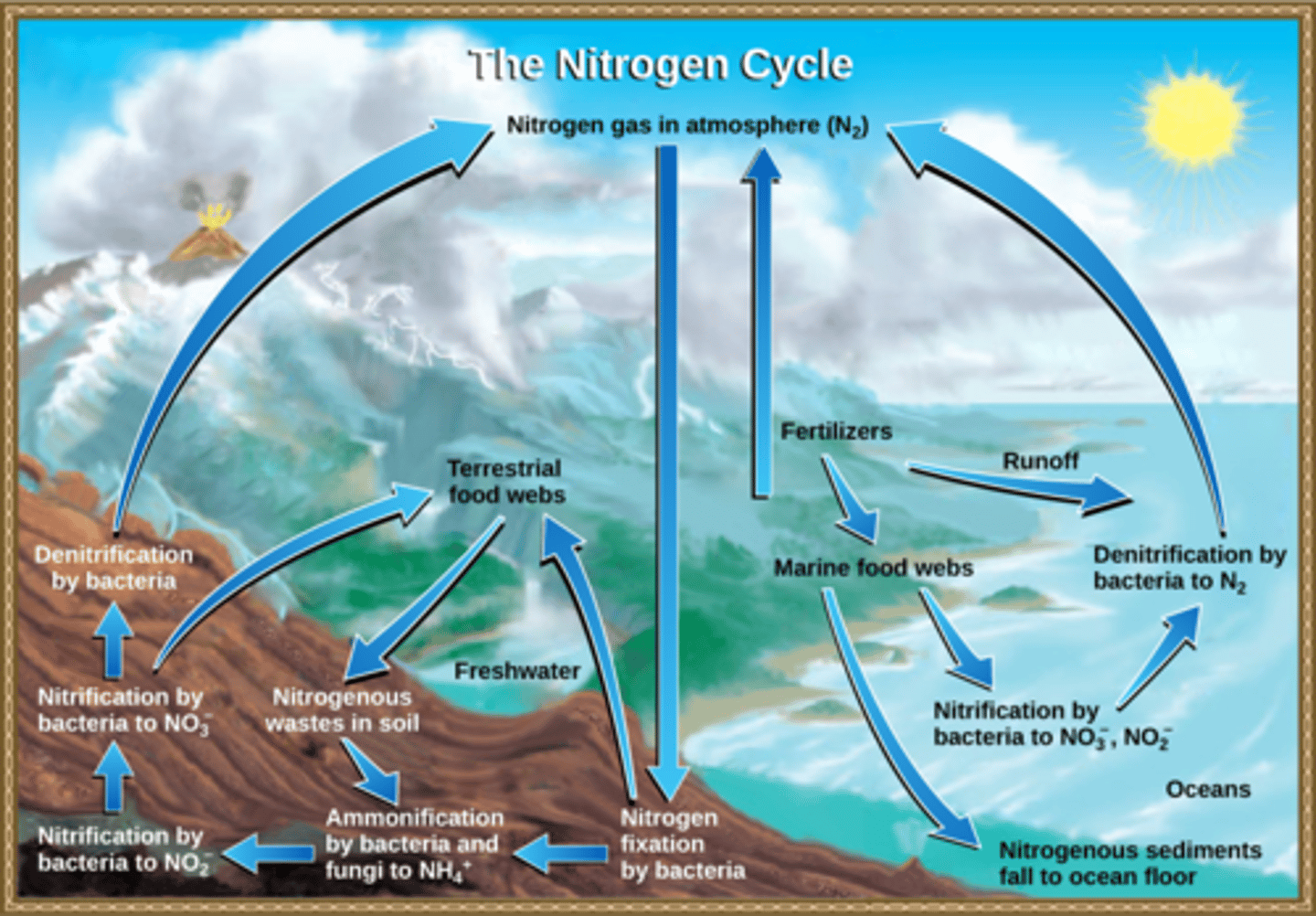
What element is required for manufacturing ATP and all nucleic acids?
phosphorous
What are the reservoirs for phosphorus?
1. rocks
2. ocean sediments

How is assimilation accomplished in the phosphorus cycle?
1. plants absorb
inorganic phosphate (PO43-)
from the soil
2. animals obtain organic
phosphorus when they eat
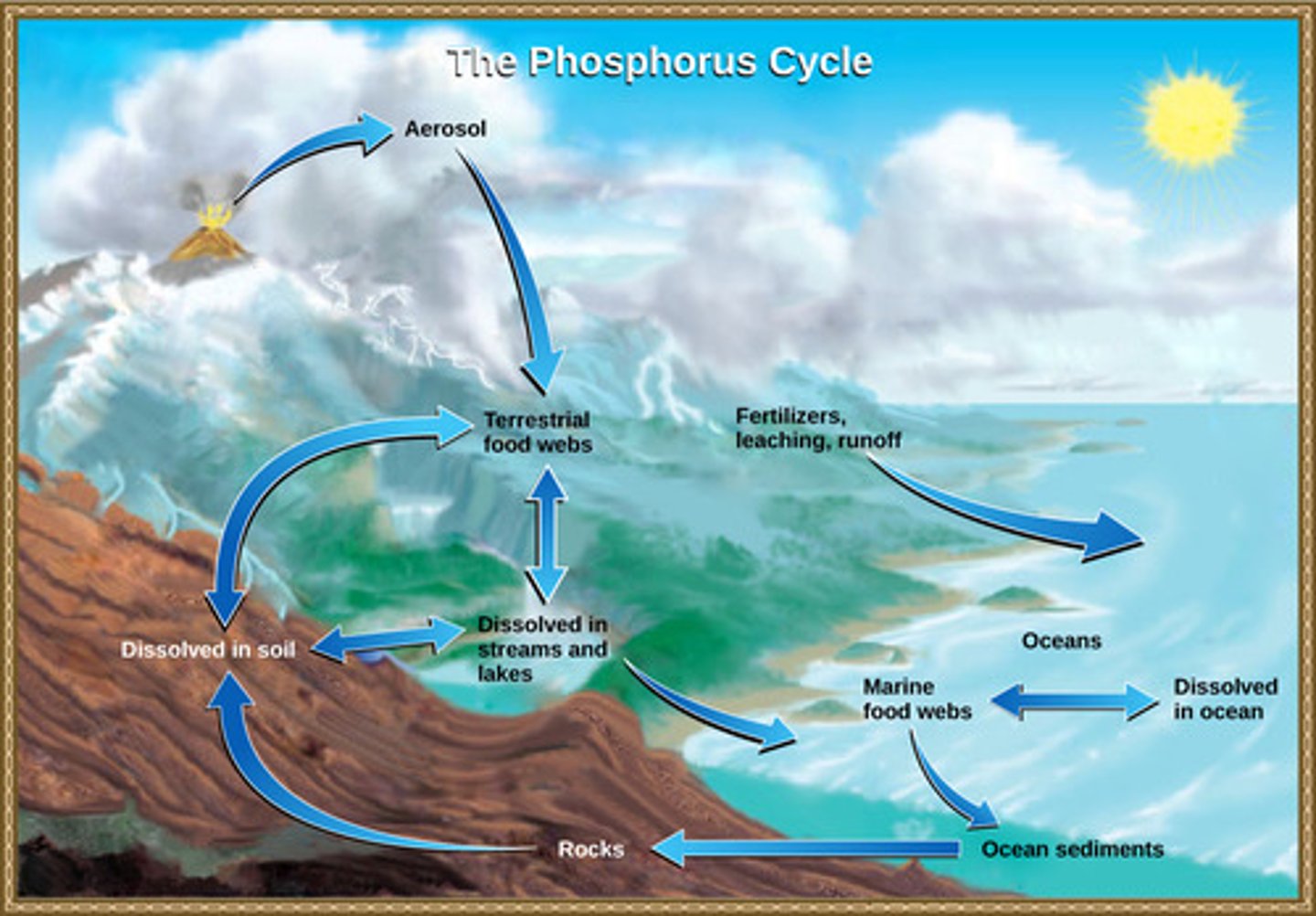
How is release accomplished in the phosphorus cycle?
1. plants/animals
decompose
2. animals excrete
phosphorus in waste
